Experimental and Numerical Analysis of Condensation Heat Transfer and Pressure Drop of Refrigerant R22 in Minichannels of a Printed Circuit Heat Exchanger
Abstract
1. Introduction
- A liquid nitrogen—R22 experimental loop is established to examine the pressure drop and condensation heat transfer coefficient of R22 in minichannels for a PCHE hot side under diverse pressures and mass flux.
- As the experimental study cannot visualize the internal flow information of the minichannels, we selected 46 sets of experimental data to study the internal flow and heat transfer characteristics for the R22 inside the PCHE minichannels via numerical simulations.
- By comparing the experimental and numerical data, the accuracy of the numerical model is verified. The influence of pressure and mass flux on the Nu and the friction pressure gradient are analyzed in depth through condensation flow regimes to explore the underlying mechanism giving the results.
2. Experimental Setup and Approach
2.1. Experimental System
2.2. Printed Circuit Heat Exchanger
2.3. Data Reduction
3. Experimental Results and Discussion
4. Numerical Model and Methodology
4.1. Computational Geometry and Boundary Conditions
4.2. Grid and Solution Methods
4.3. Model Validation
5. Numerical Results and Discussion
6. Conclusions
- The influence of the pressure and mass flux of the R22 on the pressure difference and heat transfer coefficient was analyzed experimentally. Regarding a similar pressure value, the pressure drop and the heat transfer coefficient of the R22 increased with increasing mass flux due to an increase in interfacial shear force. Accompanying a fixed mass flux value, the pressure drop and the heat transfer coefficient were relatively higher at a lower pressure.
- The Nusselt number (Nu) and the friction pressure gradient from the experiments and simulations were compared. The values of numerical Nu were higher than those of the experimental Nu, which can be attributed to the error in experimental calculations. The values of the experimental friction pressure gradient were higher than those of the simulation due to the use of an acceptable numerical model.
- The effects of pressure and mass flux on the Nusselt number and the friction pressure gradient were analyzed in depth to explore the underlying mechanism giving the results. Occurring at a lower mass flux, the R22 condensed faster and even subcooled, while at a high mass flux, the R22 was always in the two-phase flow state. As the mass flux increased, the flow regime transformed from intermittent to annular flow. The position of complete condensation was closer to the outlet and the vapor-liquid velocity difference increased with decreasing pressure.
Author Contributions
Funding
Conflicts of Interest
Nomenclature
| A | heat transfer area () |
| Dh | hydraulic diameter (m) |
| dpf/dz | friction pressure gradient (kPa m−1) |
| FSRU | the Floating Storage and Regasification Unit |
| G | mass flux (kg m−2 s) |
| H | enthalpy (kJ kg−1) |
| h | heat transfer coefficient (W m−2 K−1) |
| latent heat for liquid-vapor phase change (J kg−1) | |
| k | thermal conductivity (W m−1 K−1) |
| LNG | Liquefied Natural Gas |
| l | channel length (m) |
| m | mass flow rate (kg s−1) |
| Nu | Nusselt number |
| PCHE | Printed Circuit Heat Exchanger |
| PISO | Pressure-Implicit with Splitting of Operators |
| p | pressure (Pa) |
| pressure drop (Pa) | |
| Q | heat transfer rate (W) |
| R | thermal-conduction resistance (m2∙K W−1) |
| SLS | Selected Laser Sintering |
| T | temperature (K) |
| ΔTm | log-mean temperature difference |
| U | overall heat transfer coefficient (W m−2 K−1) |
| UDF | User Defined Function |
| u | velocity (m s−1) |
| VOF | Volume of Fluid |
| Greeks | |
| density (kg m−3) | |
| dynamic viscosity (kg m−1 s−1) | |
| correction factor | |
| surface tension (N m−1) | |
| Subscripts | |
| ave | average |
| c | cold |
| h | hot |
| l | liquid |
| v | vapor |
| s | saturation |
| in | inlet |
| out | outlet |
| w | wall |
| f | frictional |
| de | deceleration |
References
- Nikitin, K.; Kato, Y.; Ngo, L. Printed circuit heat exchanger thermal–hydraulic performance in supercritical CO2 experimental loop. Int. J. Refrig. 2006, 29, 807–814. [Google Scholar] [CrossRef]
- Chen, M.; Sun, X.; Christensen, R.N.; Shi, S.; Skavdahl, I.; Utgikar, V.; Sabharwall, P. Experimental and numerical study of a printed circuit heat exchanger. Ann. Nucl. Energy 2016, 97, 221–231. [Google Scholar] [CrossRef]
- Baek, S.; Kim, J.-H.; Jeong, S.; Jung, J. Development of highly effective cryogenic printed circuit heat exchanger (PCHE) with low axial conduction. Cryogenics 2012, 52, 366–374. [Google Scholar] [CrossRef]
- Figley, J.; Sun, X.; Mylavarapu, S.K.; Hajek, B. Numerical study on thermal hydraulic performance of a Printed Circuit Heat Exchanger. Prog. Nucl. Energy 2013, 68, 89–96. [Google Scholar] [CrossRef]
- Aneesh, A.; Sharma, A.; Srivastava, A.; Vyas, K.; Chaudhuri, P. Thermal-hydraulic characteristics and performance of 3D straight channel based printed circuit heat exchanger. Appl. Therm. Eng. 2016, 98, 474–482. [Google Scholar] [CrossRef]
- Lee, S.-M.; Kim, K.-Y. Comparative study on performance of a zigzag printed circuit heat exchanger with various channel shapes and configurations. Heat Mass Transf. 2013, 49, 1021–1028. [Google Scholar] [CrossRef]
- Kim, D.E.; Kim, M.H.; Cha, J.E.; Kim, S.O. Numerical investigation on thermal–hydraulic performance of new printed circuit heat exchanger model. Nucl. Eng. Des. 2008, 238, 3269–3276. [Google Scholar] [CrossRef]
- Kim, I.H.; No, H.C. Physical model development and optimal design of PCHE for intermediate heat exchangers in HTGRs. Nucl. Eng. Des. 2012, 243, 243–250. [Google Scholar] [CrossRef]
- Ma, T.; Li, L.; Xu, X.-Y.; Chen, Y.-T.; Wang, Q.-W. Study on local thermal–hydraulic performance and optimization of zigzag-type printed circuit heat exchanger at high temperature. Energy Convers. Manag. 2015, 104, 55–66. [Google Scholar] [CrossRef]
- Liu, N.; Li, J. Experimental study on condensation heat transfer of R32, R152a and R22 in horizontal minichannels. Appl. Therm. Eng. 2015, 90, 763–773. [Google Scholar] [CrossRef]
- Hossain, A.; Onaka, Y.; Miyara, A. Experimental study on condensation heat transfer and pressure drop in horizontal smooth tube for R1234ze(E), R32 and R410A. Int. J. Refrig. 2012, 35, 927–938. [Google Scholar] [CrossRef]
- Kim, S.-M.; Mudawar, I. Review of databases and predictive methods for heat transfer in condensing and boiling mini/micro-channel flows. Int. J. Heat Mass Transf. 2014, 77, 627–652. [Google Scholar] [CrossRef]
- Kim, S.-M.; Mudawar, I. Review of databases and predictive methods for pressure drop in adiabatic, condensing and boiling mini/micro-channel flows. Int. J. Heat Mass Transf. 2014, 77, 74–97. [Google Scholar] [CrossRef]
- Ding, Y.; Jia, L.; Yin, L.; Zhang, Y.; An, Z. Theoretical investigation on convective condensation annular flow of R410a inside rectangular microchannel. Int. J. Heat Mass Transf. 2019, 131, 698–708. [Google Scholar] [CrossRef]
- Fronk, B.M.; Garimella, S. Condensation of ammonia and high-temperature-glide ammonia/water zeotropic mixtures in minichannels—Part I: Measurements. Int. J. Heat Mass Transf. 2016, 101, 1343–1356. [Google Scholar] [CrossRef]
- Fronk, B.M.; Garimella, S. Condensation of ammonia and high-temperature-glide zeotropic ammonia/water mixtures in minichannels2014 Part II: Heat transfer models. Int. J. Heat Mass Transf. 2016, 101, 1357–1373. [Google Scholar] [CrossRef]
- Park, J.; Vakili-Farahani, F.; Consolini, L.; Thome, J. Experimental study on condensation heat transfer in vertical minichannels for new refrigerant R1234ze(E) versus R134a and R236fa. Exp. Therm. Fluid Sci. 2011, 35, 442–454. [Google Scholar] [CrossRef]
- Del Col, D.; Torresin, D.; Cavallini, A. Heat transfer and pressure drop during condensation of the low GWP refrigerant R1234yf. Int. J. Refrig. 2010, 33, 1307–1318. [Google Scholar] [CrossRef]
- Del Col, D.; Bortolin, S.; Cavallini, A.; Matkovič, M. Effect of cross sectional shape during condensation in a single square minichannel. Int. J. Heat Mass Transf. 2011, 54, 3909–3920. [Google Scholar] [CrossRef]
- Zhao, Z.; Zhang, X.; Zhao, K.; Jiang, P.; Chen, Y. Numerical investigation on heat transfer and flow characteristics of supercritical nitrogen in a straight channel of printed circuit heat exchanger. Appl. Therm. Eng. 2017, 126, 717–729. [Google Scholar] [CrossRef]
- Zhao, Z.; Zhou, Y.; Ma, X.; Chen, X.; Li, S.; Yang, S. Numerical Study on Thermal Hydraulic Performance of Supercritical LNG in Zigzag-Type Channel PCHEs. Energies 2019, 12, 548. [Google Scholar] [CrossRef]
- Zhao, Z.; Zhou, Y.; Ma, X.; Chen, X.; Li, S.; Yang, S. Effect of Different Zigzag Channel Shapes of PCHEs on Heat Transfer Performance of Supercritical LNG. Energies 2019, 12, 2085. [Google Scholar] [CrossRef]
- Zhao, Z.; Zhang, Y.; Chen, X.; Ma, X.; Yang, S.; Li, S. Experimental and numerical investigation of thermal-hydraulic performance of supercritical nitrogen in airfoil fin printed circuit heat exchanger. Appl. Therm. Eng. 2020, 168, 114829. [Google Scholar] [CrossRef]
- Zhao, Z.; Zhang, Y.; Chen, X.; Ma, X.; Yang, S.; Li, S. A numerical study on condensation flow and heat transfer of refrigerant in minichannels of printed circuit heat exchanger. Int. J. Refrig. 2019, 102, 96–111. [Google Scholar] [CrossRef]
- Yoon, S.-J.; Sabharwall, P.; Kim, E.-S. Numerical study on crossflow printed circuit heat exchanger for advanced small modular reactors. Int. J. Heat Mass Transf. 2014, 70, 250–263. [Google Scholar] [CrossRef]
- Kim, S.-M.; Mudawar, I. Universal approach to predicting two-phase frictional pressure drop for adiabatic and condensing mini/micro-channel flows. Int. J. Heat Mass Transf. 2012, 55, 3246–3261. [Google Scholar] [CrossRef]
- Lemmon, E.W.; Huber, M.L.; Mclinden, M.O. NIST Reference Fluid Properties. NIST NSRDS 2007. [Google Scholar]
- Kim, S.-M.; Mudawar, I. Flow condensation in parallel micro-channels? Part 2: Heat transfer results and correlation technique. Int. J. Heat Mass Transf. 2012, 55, 984–994. [Google Scholar] [CrossRef]
- Al-Zaidi, A.; Mahmoud, M.M.; Karayiannis, T.G. Condensation flow patterns and heat transfer in horizontal microchannels. Exp. Therm. Fluid Sci. 2018, 90, 153–173. [Google Scholar] [CrossRef]
- Al Hajri, E.; Shooshtari, A.; Dessiatoun, S.; Ohadi, M.M. Performance characterization of R134a and R245fa in a high aspect ratio microchannel condenser. Int. J. Refrig. 2013, 36, 588–600. [Google Scholar] [CrossRef]
- Liu, N.; Xiao, H.; Li, J. Experimental investigation of condensation heat transfer and pressure drop of propane, R1234ze(E) and R22 in minichannels. Appl. Therm. Eng. 2016, 102, 63–72. [Google Scholar] [CrossRef]
- Cavallini, A.; Censi, G.; Del Col, D.; Doretti, L.; Longo, G.; Rossetto, L. Experimental investigation on condensation heat transfer and pressure drop of new HFC refrigerants (R134a, R125, R32, R410A, R236ea) in a horizontal smooth tube. Int. J. Refrig. 2001, 24, 73–87. [Google Scholar] [CrossRef]
- ANSYS, Inc. FLUENT 14.0 User’s Guide; ANSYS, Inc.: Canonsburg, PA, USA, 2011. [Google Scholar]
- Kim, I.H.; No, H.C. Thermal–hydraulic physical models for a Printed Circuit Heat Exchanger covering He, He–CO2 mixture, and water fluids using experimental data and CFD. Exp. Therm. Fluid Sci. 2013, 48, 213–221. [Google Scholar] [CrossRef]
- Huang, M.; Yang, Z.; Duan, Y.-Y.; Lee, D.S. Bubble growth for boiling bubbly flow for R141b in a serpentine tube. J. Taiwan Inst. Chem. Eng. 2011, 42, 727–734. [Google Scholar] [CrossRef]


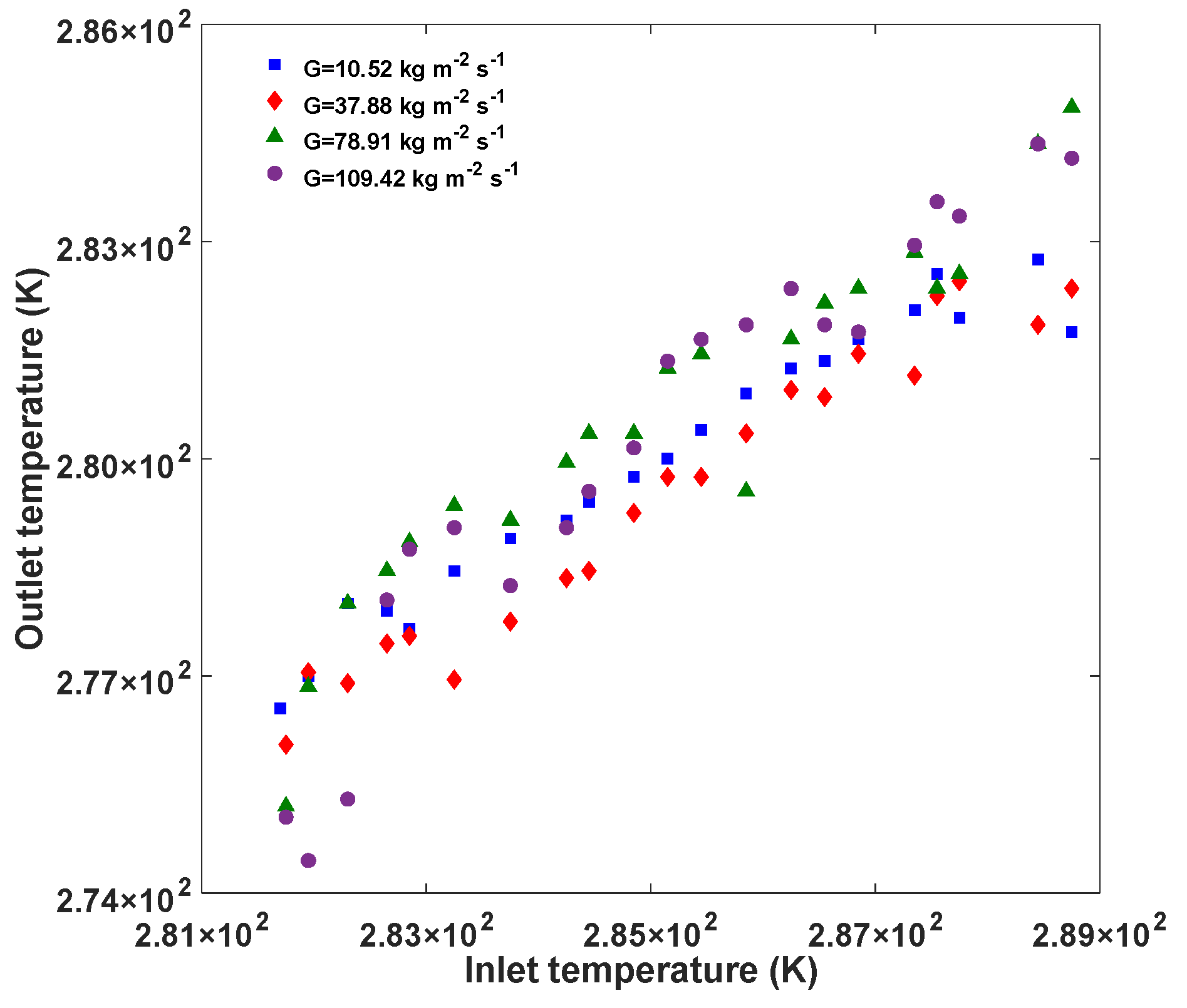

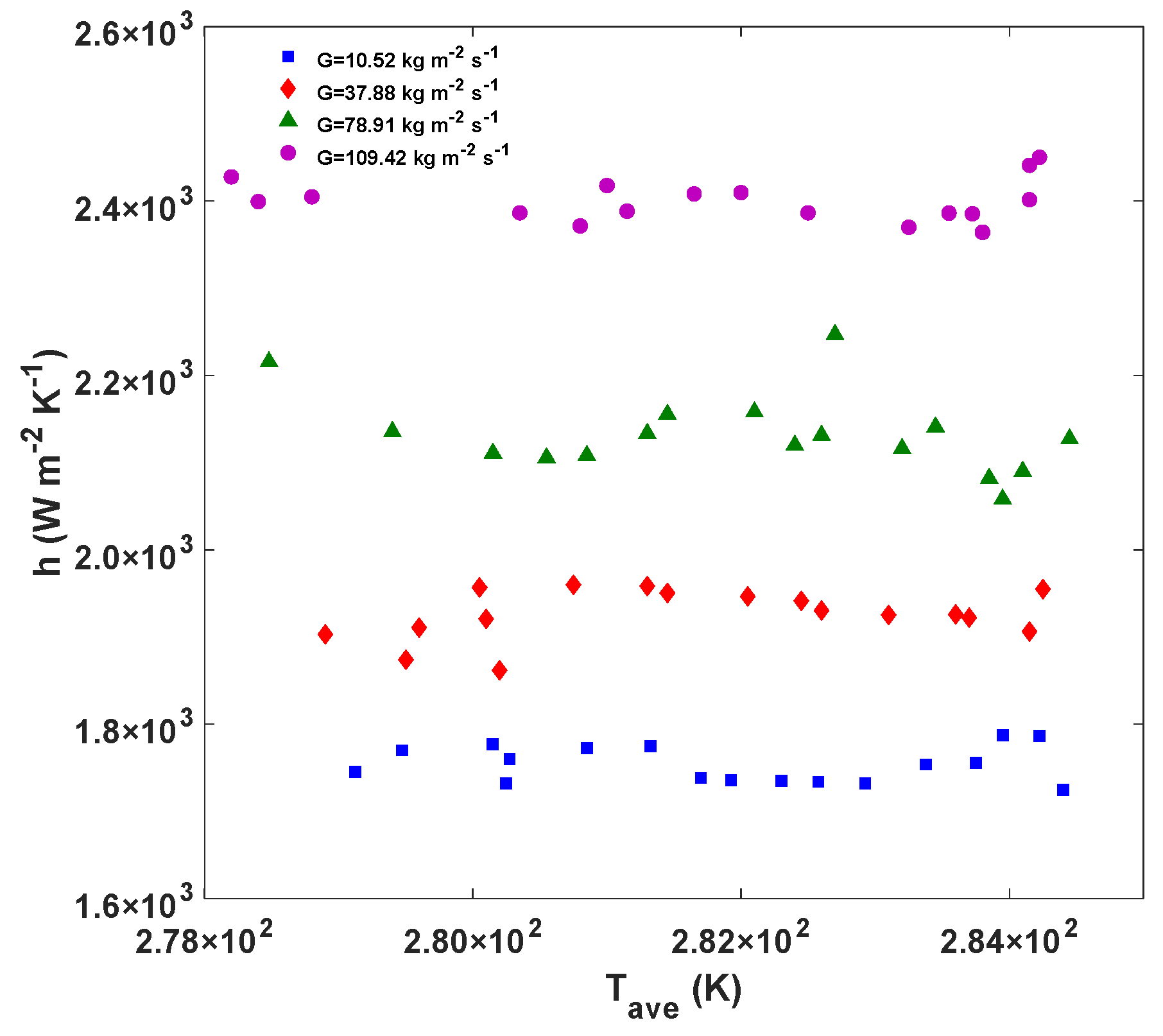

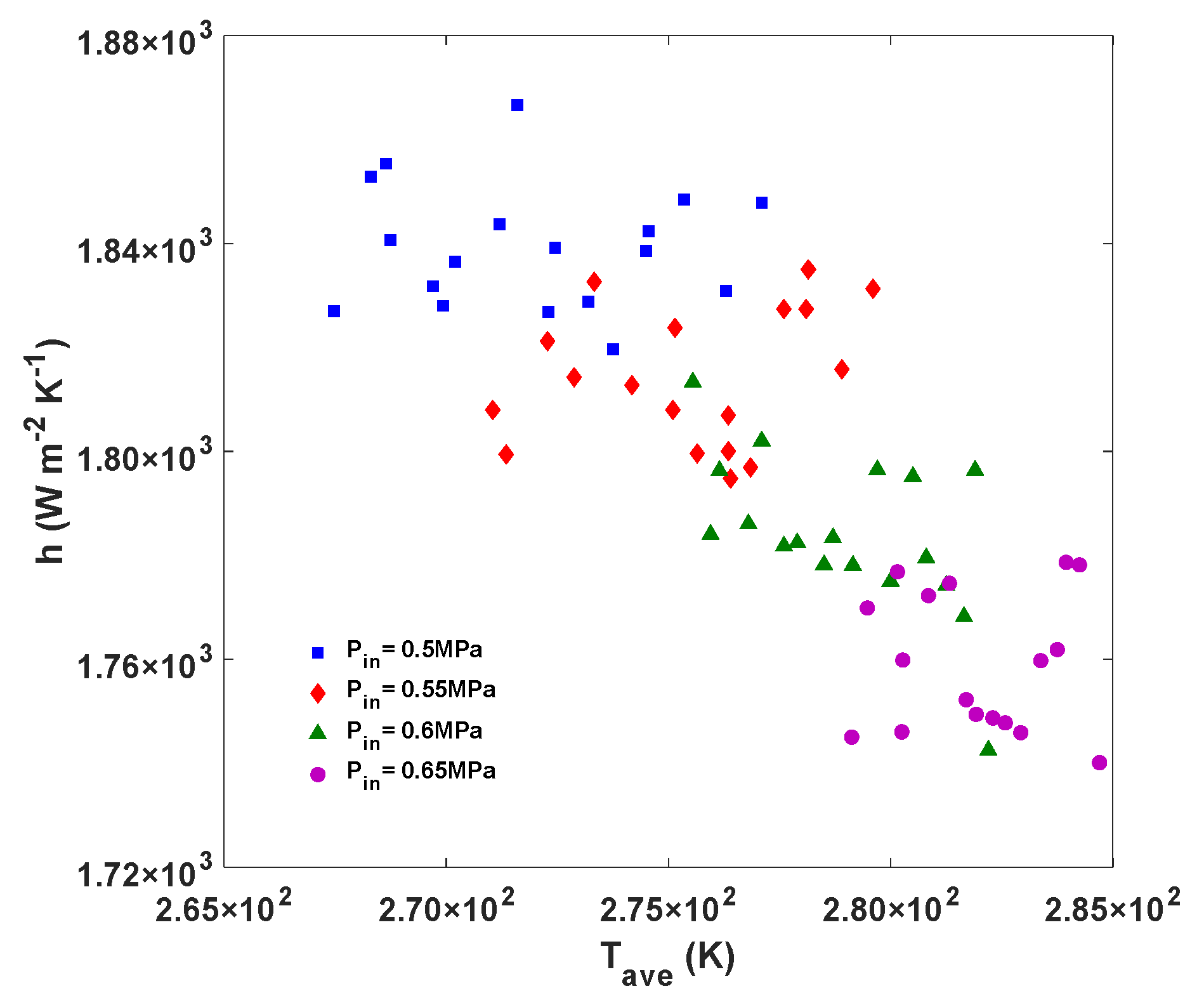

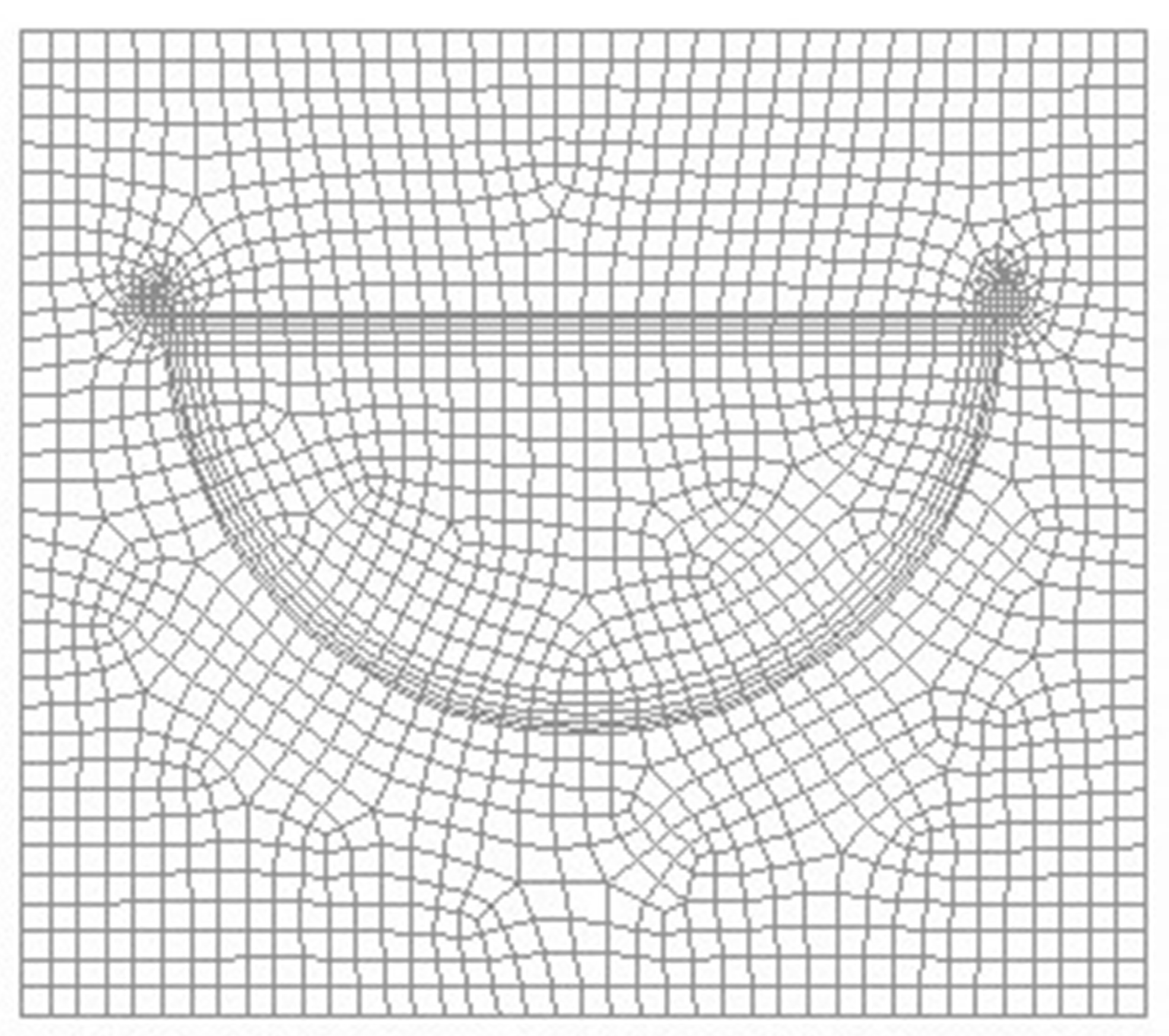
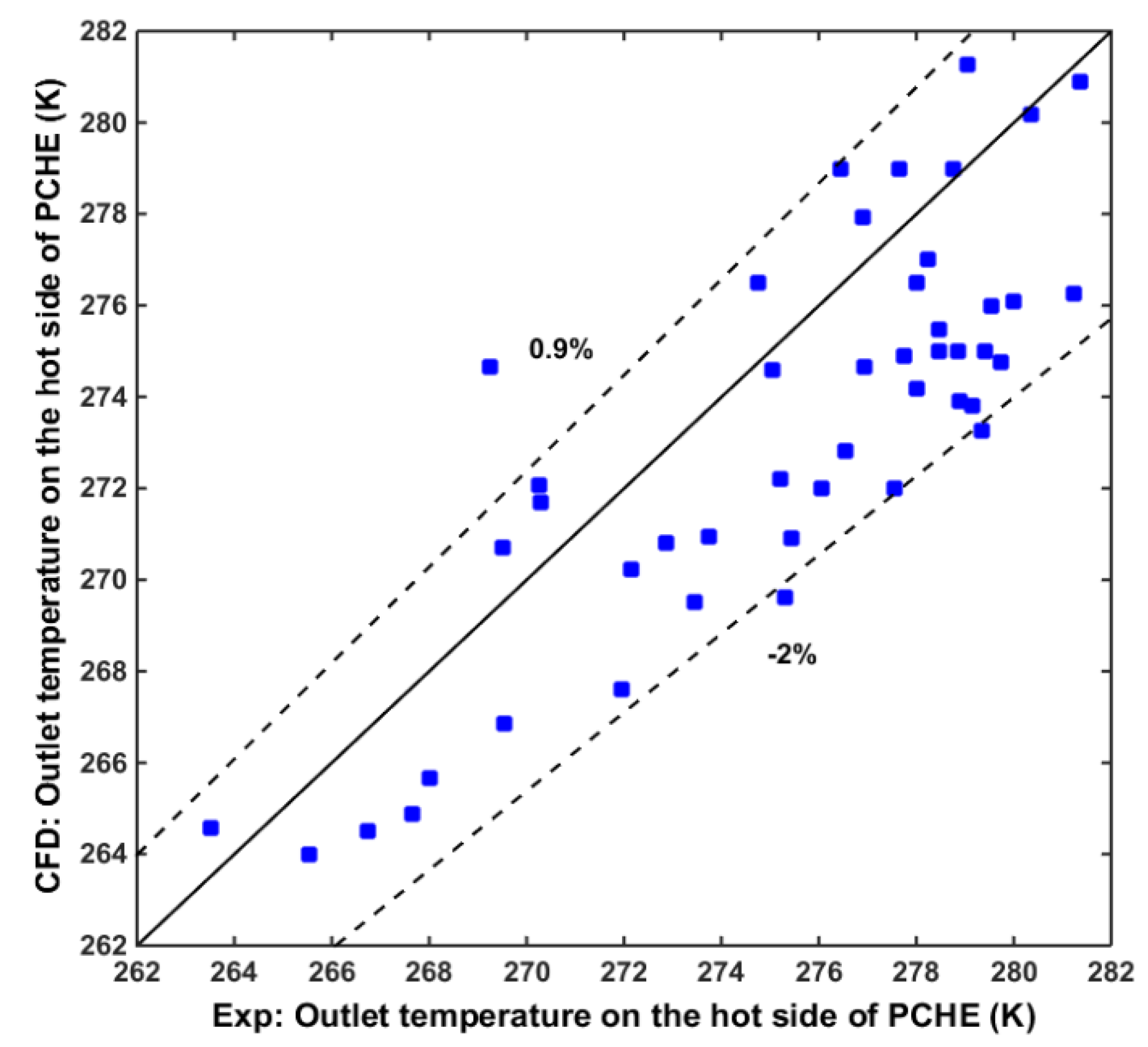


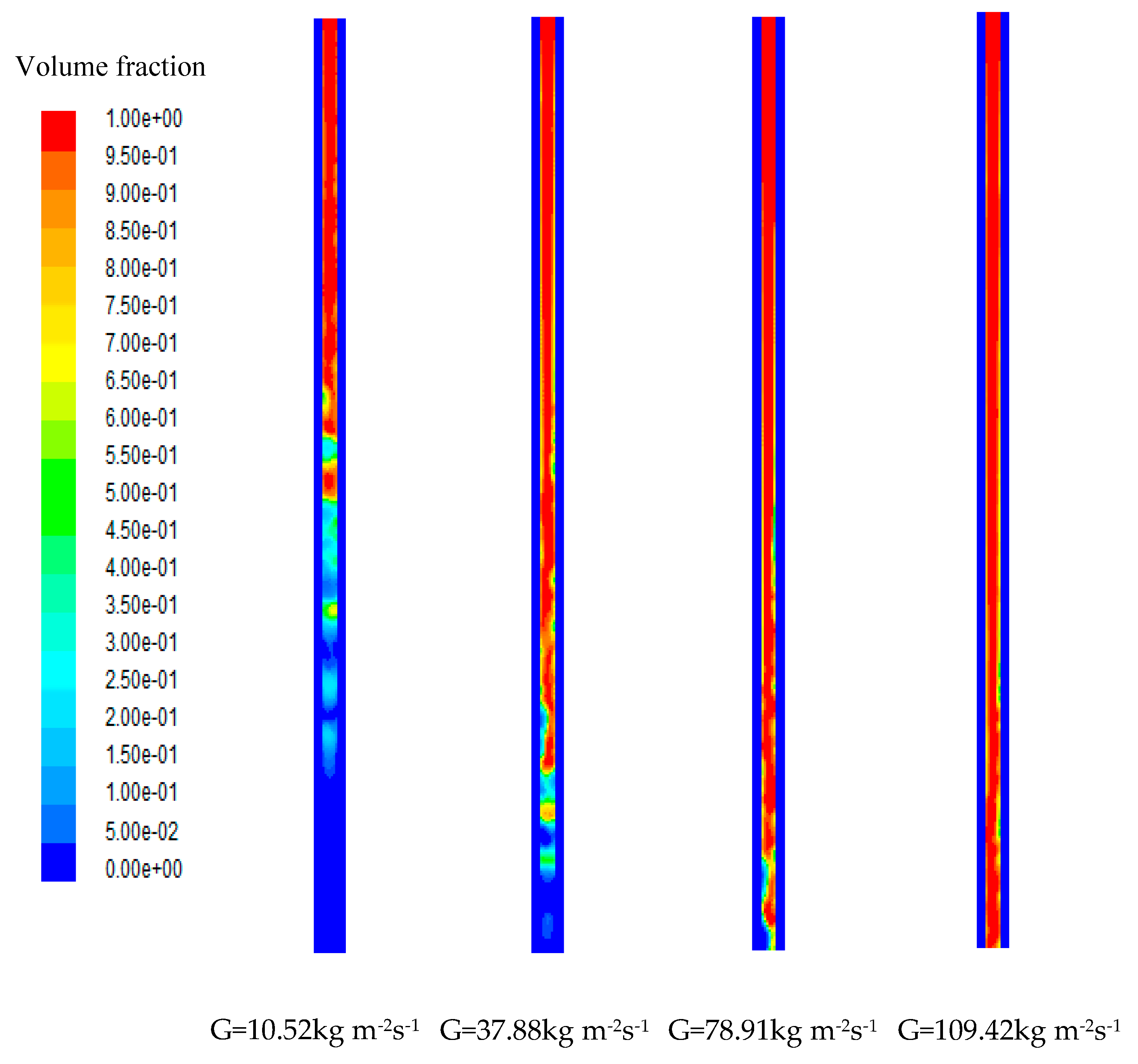


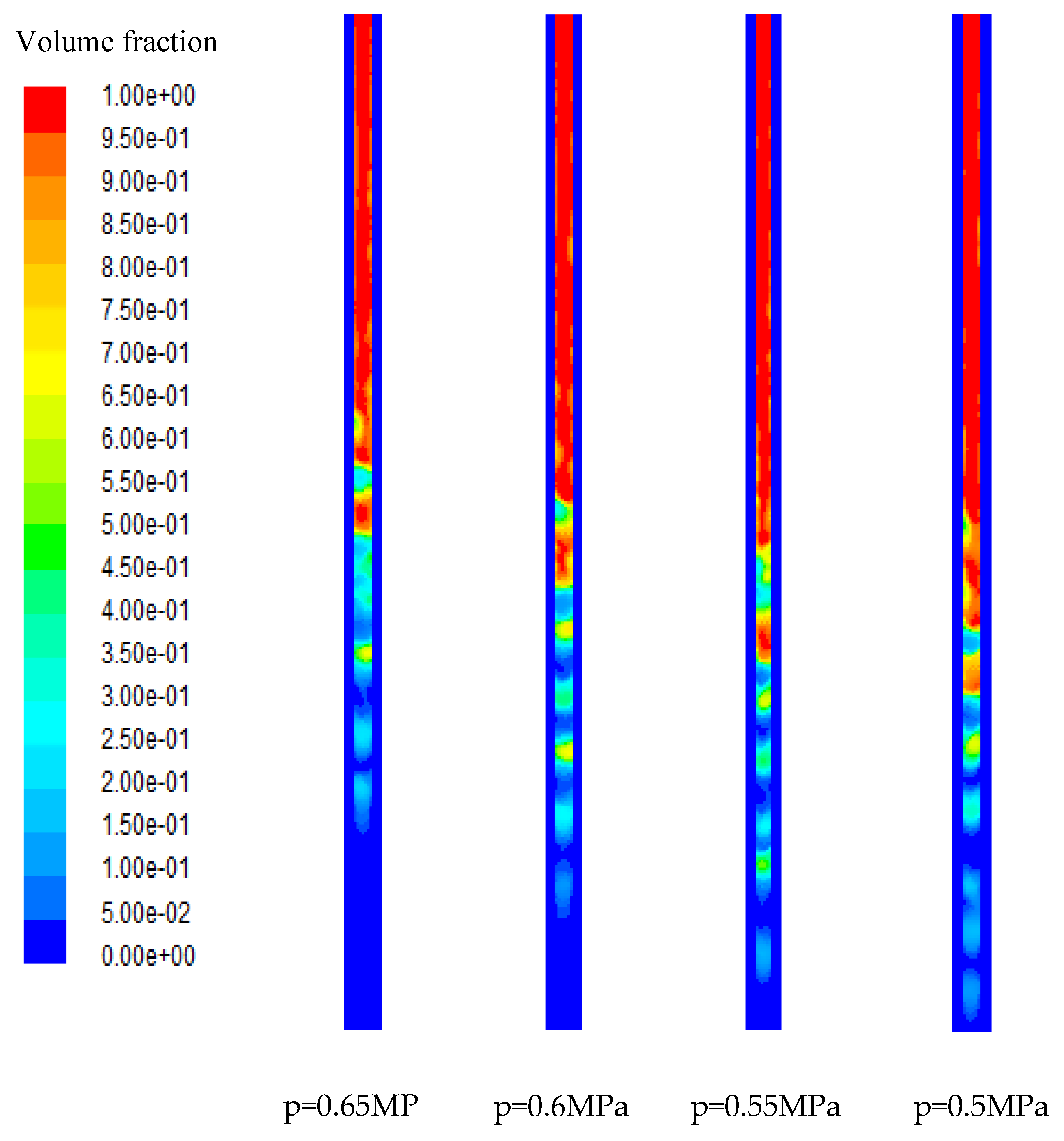
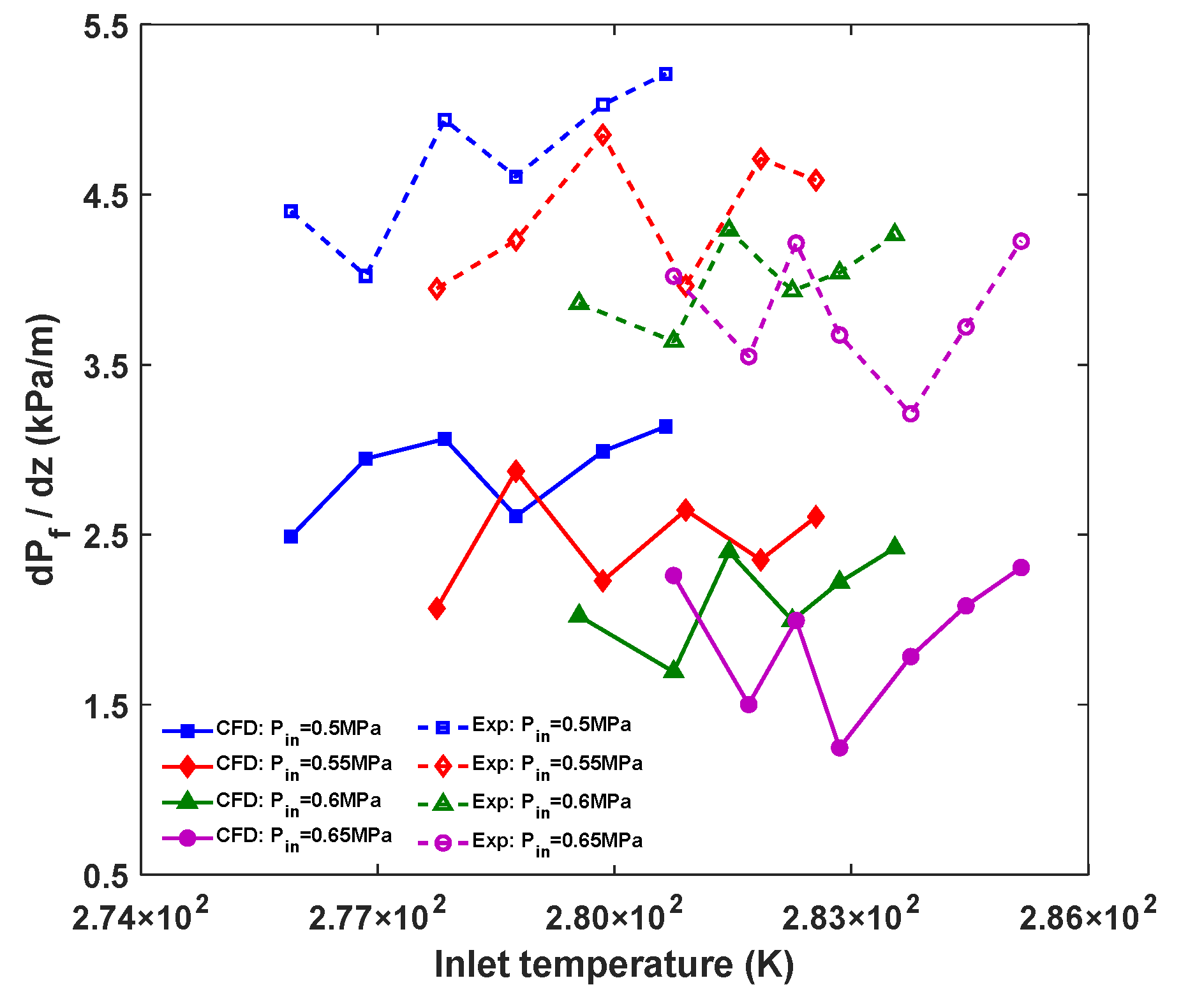
| Number of Channels | Channel Geometry (mm) | Heat Transfer Area (m2) | ||
|---|---|---|---|---|
| Hydraulic Diameter | Active Length | |||
| Hot side (R22) | 2988 | 0.91 | 50 | 0.5761 |
| Cold side (liquid N2) | 475 | 0.8389 | 400 | 0.5725 |
| P (MPa) | |||||||||
|---|---|---|---|---|---|---|---|---|---|
| 0.5 | 273.27 | 1281.1 | 21.312 | 94.687 | 9.4158 | 215.69 | 11.369 | 204.95 | 11.679 |
| 0.55 | 276.24 | 1270.9 | 23.379 | 93.353 | 9.6181 | 208.83 | 11.495 | 202.53 | 11.237 |
| 0.6 | 279.01 | 1261.3 | 25.451 | 92.108 | 9.8122 | 202.63 | 11.615 | 200.23 | 10.827 |
| 0.65 | 281.61 | 1252.2 | 27.530 | 90.938 | 9.9997 | 196.97 | 11.73 | 198.02 | 10.444 |
Publisher’s Note: MDPI stays neutral with regard to jurisdictional claims in published maps and institutional affiliations. |
© 2020 by the authors. Licensee MDPI, Basel, Switzerland. This article is an open access article distributed under the terms and conditions of the Creative Commons Attribution (CC BY) license (http://creativecommons.org/licenses/by/4.0/).
Share and Cite
Li, S.; Zhao, Z.; Zhang, Y.; Xu, H.; Zeng, W. Experimental and Numerical Analysis of Condensation Heat Transfer and Pressure Drop of Refrigerant R22 in Minichannels of a Printed Circuit Heat Exchanger. Energies 2020, 13, 6589. https://doi.org/10.3390/en13246589
Li S, Zhao Z, Zhang Y, Xu H, Zeng W. Experimental and Numerical Analysis of Condensation Heat Transfer and Pressure Drop of Refrigerant R22 in Minichannels of a Printed Circuit Heat Exchanger. Energies. 2020; 13(24):6589. https://doi.org/10.3390/en13246589
Chicago/Turabian StyleLi, Shilin, Zhongchao Zhao, Yanrui Zhang, Haijia Xu, and Weiqin Zeng. 2020. "Experimental and Numerical Analysis of Condensation Heat Transfer and Pressure Drop of Refrigerant R22 in Minichannels of a Printed Circuit Heat Exchanger" Energies 13, no. 24: 6589. https://doi.org/10.3390/en13246589
APA StyleLi, S., Zhao, Z., Zhang, Y., Xu, H., & Zeng, W. (2020). Experimental and Numerical Analysis of Condensation Heat Transfer and Pressure Drop of Refrigerant R22 in Minichannels of a Printed Circuit Heat Exchanger. Energies, 13(24), 6589. https://doi.org/10.3390/en13246589




